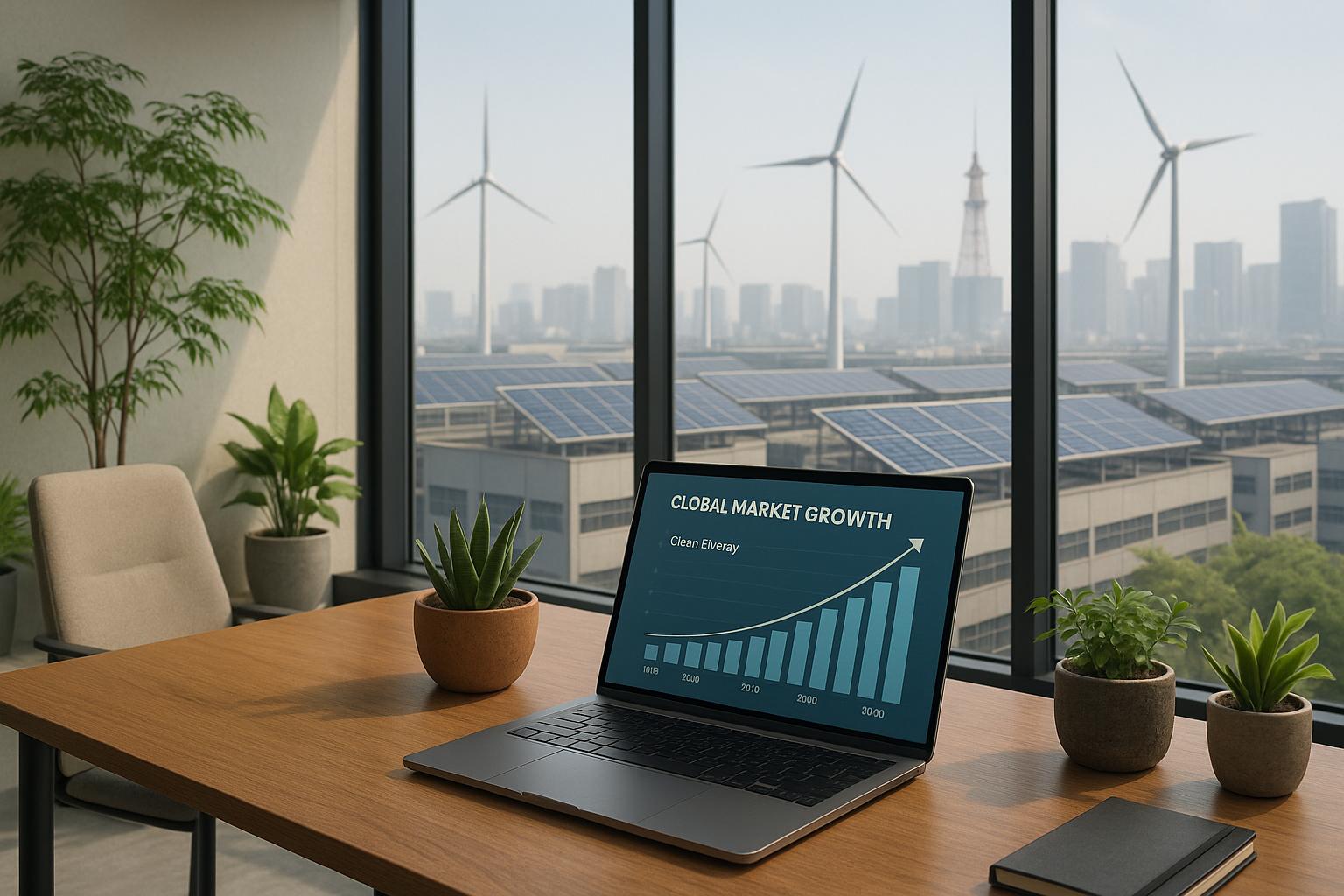Electrotech Revolution: Why German Investors Must Act Now
Introduction: The Foundation for a New Era of Energy
The energy sector stands at the threshold of...
By: Johannes Fiegenbaum on 9/26/25 3:03 PM

The energy and climate world is watching China with bated breath. With impressive speed and unprecedented investments, the country has cemented its status as a global leader in the clean-tech industry. But what does this mean for European climate tech investors, ESG executives, and VCs who are strategically focusing on clean tech and sustainable investments? This article analyzes the key insights from Ember's latest report, outlines the implications for the EU, and offers concrete approaches for investors to embed China's momentum into their strategies.
China stands at the center of the global energy transition – and for good reason. With massive investments totaling over $675 billion in clean energy in 2023 alone, innovative technologies, and dominance over global supply chains for energy storage, solar modules, and electric vehicles, the country has set new standards. But this development is not only relevant for China: The momentum generated by China's progress shapes markets, technologies, and investment opportunities worldwide – particularly for the EU.
A central element of China's strategy is the systematic over-achievement of climate goals. The target of 1,200 gigawatts of installed wind and solar capacity, originally set for 2030, was already reached in 2022. This remarkable achievement represents more than double the renewable capacity of the entire United States. Similarly, the plan for a 20% share of electric vehicles in the market, which was supposed to be implemented by 2025, was realized three years earlier, with China now accounting for over 60% of global EV sales.
What does this mean for EU climate tech investors?
A central factor is China's role as the "workshop of the energy transition." Through massively reduced costs for solar modules, batteries, and electric vehicles – with solar costs dropping 85% since 2010, markets in Africa, Southeast Asia, and Latin America are being opened up. The principle applies: Low costs open up new opportunities for developing markets.
Practical relevance for EU investors:
China demonstrates how long-term planning cycles – like the 5-year plans – make ambitious climate goals achievable. The country's 14th Five-Year Plan (2021-2025) allocated $1.4 trillion for green development, showing how systematic planning translates into market opportunities. For European investors, this means focusing on regulatory stability and precision targeting.
Investors can learn from China's innovation power, particularly in key technologies such as:
Policy changes, such as China's recent contracts based on Contracts for Difference (CfD), can serve as a model for innovative financing in Europe. These mechanisms have helped China achieve grid parity for renewables ahead of schedule.
China has set the standard for the energy transition, demonstrating that rapid decarbonization is not only possible but economically advantageous. Europe and other global players face the challenge of not being left behind in a rapidly growing clean-tech economy valued at over $1.8 trillion globally, but rather finding a strategic role. Investors who recognize China's momentum and strategically invest in emerging markets and new technologies can not only achieve their climate goals but also generate significant returns.
The message is clear: Those who don't act now risk losing connection to the future of energy. With the right strategies and a clear focus on planning, innovation, and cooperation, the EU can not only be part of the clean-tech revolution but actively shape it. The window of opportunity remains open, but it's narrowing as China continues to accelerate its clean energy deployment at unprecedented scale.
Source: "Launch of the China Energy Transition Review 2025 - Europe & Americas Session" - Ember, YouTube, Sep 10, 2025 - https://www.youtube.com/watch?v=PUWEL_3JXaw
Use: Embedded for reference. Brief quotes used for commentary/review.

ESG & sustainability consultant specializing in CSRD, VSME, and climate risk analysis. 300+ projects for companies like Commerzbank, UBS, and Allianz.
More aboutThe energy sector stands at the threshold of...
Investments in Climate Tech offer early-stage investors in Germany 9% higher returns than other...